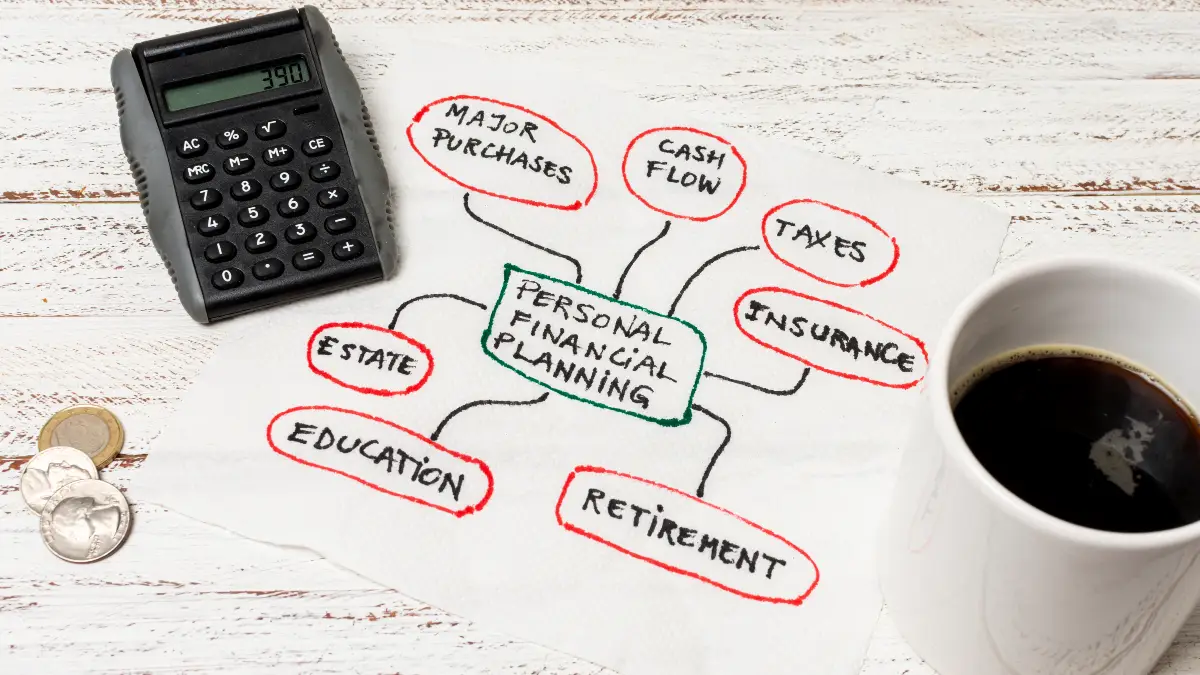
For middle-class retirees, October 2025 presents a critical decision point. With CD rates hovering near 4.5% while the Federal Reserve signals further cuts, and the S&P 500 showing signs of overvaluation after years of exceptional returns.
The choice between safety and growth has rarely been more consequential. This isn’t simply about which investment performs better on paper. It’s about structuring your retirement income to survive market downturns while still growing enough to last 25-30 years.
The mathematics of sequence risk, tax efficiency, and inflation protection all point to one conclusion most retirees need both CDs and stocks—in the right proportions, at the right time, for the right purposes.
Current CD Rates: A Temporary Sweet Spot

After years of near-zero returns, certificate of deposit rates have settled into a sweet spot that’s particularly attractive for retirees seeking stability. Current top rates from leading institutions include:
| Institution | 6-Month | 1-Year | 2-Year | 3-Year | 5-Year |
|---|---|---|---|---|---|
| E*TRADE | 4.45% | 4.25% | 4.00% | 4.10% | 4.20% |
| Bread Savings | 4.45% | 4.00% | 4.00% | 4.00% | 4.00% |
| Newtek Bank | 4.35% | 4.25% | 3.95% | 3.80% | 4.10% |
| Popular Direct | 4.40% | 4.15% | 4.05% | 4.15% | 4.20% |
| United Fidelity | 4.30% | 4.20% | 4.15% | 4.05% | 4.30% |
| NASA FCU (Special) | 4.59% (9-mo) | – | – | – | – |
These rates—while lower than the 5%+ peaks we saw in late 2023—remain significantly above the long-term average for fixed-income investments. The question is: how long will they last?
The Rate Decline Timeline: Why Now Matters
The Federal Reserve has begun its easing cycle, with rates already down from their peak. The current trajectory offers a clear picture of what’s ahead:
- Current fed funds rate: 4.00%-4.25% as of September 17, 2025
- September 2025 dot plot forecast: 3.50%-3.75% by end of 2025
- Projected timeline: Two more 0.25% cuts expected before year-end
- Long-term neutral rate: Approximately 3.00%
Each Fed rate cut typically translates to a corresponding reduction in CD rates within 30-45 days. What does this mean for savers? Every month of delay likely costs you 0.05%-0.10% in available yields—a meaningful difference when compounded over multi-year terms.
“We’re seeing the tail end of an attractive rate environment for retirees,” notes Randy Carver, President of Carver Financial Services. “Clients who locked in 5-year CDs last year at 5% are sitting pretty, but even today’s 4.25%-4.45% rates offer significant value considering where we’re headed. By this time next year, we’ll likely be looking at CD rates in the 3.25%-3.75% range.”
The downward trend is already evident. Major institutions have trimmed their highest CD rates from the 5.00%-5.25% range in 2023 to today’s 4.25%-4.45% level. This decline is accelerating as markets price in the Fed’s projected easing path.
The Historical Context: Unusually Favorable Conditions
To appreciate the current opportunity, consider the longer historical perspective:
- The average 1-year CD rate over the past 20 years is approximately 1.75%
- Current 1-year CD rates around 4.25% represent a premium of 2.50% above long-term averages
- The last time rates were this attractive was briefly during 2006-2007
- The pandemic era saw rates fall to as low as 0.15%-0.25% for many terms
Even after recent declines, today’s CD yields remain in the 92nd percentile of rates over the past two decades—a statistical outlier that won’t persist as monetary policy normalizes.
The Strategic Opportunity: Lock in Now, But Selectively
This creates a compelling case for action in October 2025, but the emphasis must be on strategic allocation, not wholesale shifts from equities to fixed income.
“The biggest mistake I see is retirees going all-in on CDs because rates look attractive,” Carver explains. “Smart investors are using this window to lock in rates for their near-term spending needs—typically 1-3 years of expenses—while maintaining appropriate equity exposure for long-term growth.”
The impending rate decline adds urgency to this decision. A 6-month CD opened today at 4.45% can be rolled into another short-term instrument when it matures in April 2026. But by then, rates may have fallen to 3.75% or lower, reducing your income by 15% or more.
For a retiree with $100,000 in cash reserves, the difference between acting now versus waiting six months could amount to $700-$1,500 in reduced interest income over a two-year period—not insignificant for those on fixed incomes.
The Actionable Takeaway
If you’re considering incorporating CDs into your retirement income strategy, October 2025 represents an optimal window to lock in rates—but only for the appropriate portion of your portfolio. The next section will examine how these fixed-income returns compare to equity investments, helping you determine exactly which funds belong in CDs versus the stock market.
A prudent approach: Calculate your anticipated expenses for the next 1-3 years, subtract guaranteed income sources (Social Security, pensions), and consider placing this difference in a strategic CD ladder now, before the remaining Fed rate cuts further erode available yields.
Recent Performance: Exceptional Returns, Historical Context
The stock market has delivered remarkable performance over the past decade, particularly in recent years:
- 2024 total return: 25.02% (a standout year following the 2023 recovery)
- 2025 YTD (through Q3): Approximately 10%
- 10-year average annual return: 14.05% (well above historical norms)
- 20-year average annual return: 10.69%
These figures paint a picture of exceptional performance—the 10-year average of 14.05% significantly exceeds the long-term historical average of approximately 10% that many retirees may remember from financial planning guides. This outperformance has been driven largely by technology companies, low interest rates, and robust corporate earnings.
However, seasoned investors know that past performance rarely predicts future results, especially when starting from today’s valuation levels.
Current Valuations: Flashing Caution Signals
Several key metrics suggest the market is currently trading at premium valuations:
- Price-to-earnings (P/E) ratio: 28-31 (compared to the historical average of 16-20)
- Shiller CAPE ratio: 37.1 (80.9% above the modern-era average)
- Current valuations: At the 93rd historical percentile
These elevated valuations don’t necessarily predict an imminent correction, but they do suggest more modest returns ahead. “We’re seeing multiples well above historical norms,” notes Christine Benz, Director of Personal Finance at Morningstar. “While this doesn’t mean stocks can’t continue higher, it does suggest investors should recalibrate their return expectations downward, especially for retirement planning purposes.”
Expert Forecasts for 2025-2026: Tempering Expectations
Major financial institutions have published their outlook for the year ahead, and the consensus points to more moderate gains:
- Goldman Sachs: Revised their S&P 500 target to 5,700 (representing only about 2% growth from current levels)
- Vanguard: Projects 3.3%-5.3% annualized returns over the next decade (with bonds at 4.0%-5.0%)
- JPMorgan: Maintains a 6,000 year-end target
- Consensus estimate: Approximately 6,500 (8-10% expected)
The critical insight here: Even the most optimistic forecasts suggest returns below the 14% average of the past decade, with many respected institutions projecting single-digit growth for years to come.
| Time Period | S&P 500 Average Annual Return |
|---|---|
| Past 10 Years (2015-2025) | 14.05% |
| Past 20 Years (2005-2025) | 10.69% |
| Historical Average (1926-2025) | ~10.00% |
| Projected Next Decade (2025-2035) | 3.3%-8.0% |
Retiree-Specific Risk Factors
Beyond general market conditions, retirees face several unique risk considerations:
1. Declining Dividend Yields
The S&P 500’s current dividend yield stands at just 1.16%—near historical lows and well below the 3-4% yields common in previous decades. This reduced income stream means retirees must rely more heavily on selling assets to generate income, increasing vulnerability to market timing risk.
2. Sequence of Returns Risk
Perhaps the greatest threat to retirement security isn’t average returns but rather when those returns occur. Research from Morningstar and others demonstrates that a 15% market decline in the first year of retirement increases the odds of portfolio depletion by approximately six times compared to experiencing the same loss later in retirement.
“The first five years of retirement represent a danger zone,” explains William Bengen, creator of the 4% withdrawal rule. “Market downturns during this period, combined with ongoing withdrawals, can permanently impair a portfolio’s ability to recover.”
3. Concentration Risk
The S&P 500 has become increasingly concentrated, with the top eight companies now representing approximately 35.6% of the index. This concentration creates additional vulnerability if these dominant companies face sector-specific challenges.
Expert Perspectives on Safe Withdrawal Rates
The current environment has prompted retirement experts to revise their guidance on sustainable withdrawal rates:
- Christine Benz (Morningstar) recommends a 3.7% initial withdrawal rate for 2025 retirees, down from the traditional 4%
- William Bengen recently updated his recommendation to 4.7% (for balanced portfolios), reflecting his continued confidence in diversification
“Today’s starting valuations and expected returns suggest more caution with initial withdrawal rates,” Benz notes. “Retirees who begin with 3.5%-4% and maintain flexibility—willing to reduce spending during market downturns—will significantly improve their odds of success.”
Actionable Takeaway
Despite the cautionary signals, stocks remain essential for long-term growth in retirement portfolios. The key adjustment for today’s retirees: Plan for 4-6% annual returns rather than the 10%+ returns of recent memory, and implement strategies to protect against early retirement losses.
This more conservative projection doesn’t mean abandoning equities—quite the opposite. Lower expected returns mean retirees need growth assets more than ever to combat inflation over a 25-30 year retirement horizon. However, it does highlight the importance of having sufficient cash and CD reserves to weather market volatility without being forced to sell stocks during downturns.
The next section will examine the critical after-tax, after-inflation math that ultimately determines your real returns from both CDs and stocks—revealing surprising advantages that many retirees overlook.
CD Real Returns: The Tax and Inflation Impact

Let’s examine how a seemingly attractive 5% CD performs in real-world conditions for two different retirement scenarios:
Scenario 1: Lower Middle-Income Couple ($75K AGI)
For a retired couple with $75,000 in adjusted gross income, here’s how a $100,000 investment in a 5% CD actually performs:
- Initial investment: $100,000
- Gross interest earned: $5,000 (5.0%)
- Federal income tax (12% bracket): -$600
- State income tax (5% average): -$250
- Net after-tax return: $4,150 (4.15%)
- Inflation adjustment (2.9% current rate): -$2,900
- Real return after taxes and inflation: $1,250 (1.25%)
Over a 10-year period, this translates to approximately $18,912 in real growth on the initial $100,000 investment—the actual increase in purchasing power.
Scenario 2: Higher Middle-Income Couple ($150K AGI)
For retirees with slightly higher income of $150,000, the math becomes even less favorable:
- Initial investment: $100,000
- Gross interest earned: $5,000 (5.0%)
- Federal income tax (22% bracket): -$1,100
- State income tax (5% average): -$250
- Net after-tax return: $3,650 (3.65%)
- Inflation adjustment (2.9% current rate): -$2,900
- Real return after taxes and inflation: $750 (0.75%)
At this income level, the supposedly “safe” 5% CD barely maintains purchasing power after accounting for taxes and inflation.
S&P 500 Real Returns: The Tax-Efficiency Advantage
Now let’s examine how an S&P 500 index fund investment compares for the same scenarios:
Scenario 1: $75K AGI Couple
For a retired couple with $75,000 in adjusted gross income:
- Initial investment: $100,000
- Assumed total return: 8.0% (consisting of 2% dividends, 6% growth)
- Tax on qualified dividends: $0 (0% rate below $96,700 threshold)
- Tax on unrealized capital gains: $0 (taxed only when sold)
- Net after-tax return: ~8.0%
- Inflation adjustment (2.9% current rate): -$2,900
- Real return after taxes and inflation: 5.1%
Over a 10-year period, this yields approximately $66,425 in real growth on the initial $100,000 investment.
The Wealth Gap
This difference creates a dramatic wealth divergence over time. After 10 years, the same $100,000 initial investment grows to:
- CDs: $118,639 in real purchasing power (19% growth)
- Stocks: $166,425 in real purchasing power (66% growth)
- Difference: $47,786 (40% more wealth with stocks)
The compounding effect of this difference becomes even more pronounced over longer retirement time horizons of 20-30 years.
The Tax Treatment Advantage
The stark difference in after-tax performance is driven by several key tax advantages that stocks have over CDs:
| Factor | 5% CDs | S&P 500 |
|---|---|---|
| Tax treatment | Ordinary income | Qualified dividends/LTCG |
| Tax rate (most retirees) | 12-22% | 0-15% |
| Annual tax obligation | Yes (even if not withdrawn) | Only when realized |
| After-tax return ($75K couple) | 4.15% | 8.0% |
| Real return (after 2.9% inflation) | 1.25% | 5.1% |
The most significant advantage: qualified dividends and long-term capital gains enjoy preferential tax treatment, with married couples earning under $96,700 in taxable income (after deductions) paying 0% tax on both dividends and realized gains.
CD interest, by contrast, is always taxed as ordinary income at your marginal tax rate, regardless of whether you spend the interest or reinvest it.
Hidden Tax Traps: Beyond the Basic Calculations

The tax impact extends beyond direct taxes on investment income. Several secondary effects can magnify the tax burden of CD interest:
Social Security Taxation
For retirees receiving Social Security benefits, every additional dollar of “ordinary income” (including CD interest) can cause up to 85 cents of previously untaxed Social Security benefits to become taxable.
For example, a couple with $30,000 in Social Security benefits and $40,000 in other income might find that an additional $5,000 in CD interest not only gets taxed directly but also pushes an additional $4,250 of their Social Security benefits into taxable territory.
Medicare IRMAA Surcharges
Income-Related Monthly Adjustment Amounts (IRMAA) create sharp Medicare premium increases when income crosses specific thresholds. For 2025, these surcharges begin at modified adjusted gross incomes of $106,000 (single) or $212,000 (married).
Crossing an IRMAA threshold by even $1 can trigger surcharges of $1,776 to $10,653 annually for couples, depending on the bracket. CD interest counts toward IRMAA thresholds, while unrealized capital gains do not.
RMD Complications
For retirees over 73 with traditional IRAs, Required Minimum Distributions (RMDs) are calculated on the total account balance. CD interest earned within an IRA increases this balance and subsequently increases future RMD obligations, potentially pushing retirees into higher tax brackets.
“Most retirees focus exclusively on the headline yield and completely miss these secondary tax effects,” says Mark Wilson, CFP®. “When we model the full tax impact, we often find a seemingly ‘safe’ 5% CD can actually cost clients more than its modest yield advantage is worth.”
Actionable Takeaway
For most middle-class retirees earning under $96,700 in taxable income, the 0% capital gains and qualified dividend rate makes stocks dramatically more tax-efficient than CDs. This doesn’t mean avoiding CDs entirely, but it strongly suggests:
- Maximize use of the 0% capital gains bracket each year
- Place fixed-income investments in tax-advantaged accounts when possible
- Recognize that the true “safety” of CDs must be measured in after-tax, after-inflation terms
- Consider the hidden tax traps of ordinary income when planning your overall investment strategy
The next section will demonstrate how to combine these insights into the “bucket strategy”—a proven approach that gives you both the security of CDs and the growth potential of stocks in a tax-efficient structure.
The Proven Approach That Gives You Security AND Growth

The stark contrast between CD and stock returns presents retirees with a seemingly impossible choice: accept the security of CDs at the cost of minimal real returns, or pursue the growth of stocks while enduring volatility. Fortunately, there’s a solution that provides both security and growth potential: the bucket strategy.
According to a 2025 CFP Board survey, this approach is now recommended by 87% of financial planners for their retired clients—making it the consensus choice among retirement experts.
The Three-Bucket Framework
Rather than viewing your retirement portfolio as a single entity, the bucket strategy divides it into three distinct pools of money, each with its own purpose, time horizon, and appropriate investments.
BUCKET 1: NOW (1-3 years of expenses)
Purpose: Emergency fund and near-term living expenses Assets: Cash, high-yield savings, short-term CDs (3-18 months) Current rates: 4.35%-4.45% on short-term CDs Amount: Typically $40,000-$100,000 for most retirees
This is your security bucket—the money you’ll live on in the immediate future. By keeping 1-3 years of expenses here, you gain peace of mind knowing your short-term needs are fully protected from market volatility.
Example: For a 65-year-old couple with $50,000 in annual expenses:
- Bucket 1 amount: $75,000 (1.5 years of expenses)
- Structure: $25,000 in high-yield savings account + $50,000 in a 6-month CD ladder
“Bucket 1 is your sleep-at-night money,” explains Aaron Simpson, CFP®. “Having this cushion allows retirees to weather market volatility without being forced to sell assets at inopportune times. In behavioral finance terms, it’s as much an emotional buffer as a financial one.”
BUCKET 2: SOON (4-10 years)
Purpose: Intermediate needs with modest growth Assets: 1-5 year CD ladder, short-term bond funds, high-quality dividend stocks Amount: 3-8 years of expenses (varies by age and risk tolerance)
This middle bucket bridges the gap between immediate needs and long-term growth. It provides stability while offering returns that can outpace inflation.
Example: Continuing with our 65-year-old couple:
- Bucket 2 amount: $200,000 (4 years of expenses)
- Structure: $100,000 in a 5-rung CD ladder + $100,000 in short-term bond funds
“Bucket 2 serves as your replenishment source for Bucket 1,” notes Melissa Walsh, CFP®. “As you spend down Bucket 1, you systematically refill it from Bucket 2, ideally during favorable market conditions. This creates a continuous cascade of liquidity.”
BUCKET 3: LATER (10+ years)
Purpose: Long-term growth to outpace inflation Assets: S&P 500 index funds, diversified stocks, growth investments Amount: Remainder of portfolio (typically the largest portion)
This growth bucket is vital for maintaining purchasing power throughout a 25-30 year retirement. Since these funds won’t be needed for a decade or more, they can ride out market volatility.
Example: For our couple with an $800,000 total portfolio:
- Bucket 3 amount: $525,000 (66% of portfolio)
- Structure: 70% S&P 500 index fund + 30% international stocks
“Many retirees mistakenly believe they should become ultra-conservative once they stop working,” says Simpson. “The reality is that a 65-year-old couple has a 50% chance that one spouse will live past 90. That 25-30 year time horizon demands growth assets to combat inflation.”
How It Works Over Time
The bucket strategy isn’t static—it’s a dynamic system that maintains your financial security while allowing your money to grow.
Annual Maintenance: Each year, you replenish Bucket 1 from Bucket 2, ensuring you always have 1-3 years of expenses in safe, liquid investments.
Every 3-5 Years: During favorable market conditions, you transfer money from Bucket 3 to refill Bucket 2. This systematic approach allows you to sell stocks when prices are relatively high.
During Bear Markets: The true power of this approach becomes evident during market downturns. When stocks plummet, you simply live off Buckets 1 and 2, giving your equity investments time to recover before you need to tap them.
“The psychological benefit cannot be overstated,” Walsh emphasizes. “Knowing you have 5-8 years of expenses covered regardless of what the market does tomorrow provides tremendous peace of mind. This prevents panic selling, which is the single biggest destroyer of retirement wealth.”
Real-World Case Study
James & Linda, ages 68 & 66:
- Portfolio: $1.2 million
- Social Security: $50,000/year
- Expenses: $75,000/year (requiring $25,000 from their portfolio)
- Bucket allocation:
- Bucket 1: $50,000 cash/short-term CDs (2 years of portfolio withdrawals)
- Bucket 2: $150,000 CD ladder/bonds (6 years of withdrawals)
- Bucket 3: $1 million in diversified stocks (60/40 U.S./international)
When the 2022 market downturn hit, James and Linda continued their planned $25,000 annual withdrawals from Bucket 1, completely avoiding the need to sell stocks at depressed prices. By 2024, when markets had recovered, they were able to replenish their first two buckets from Bucket 3 gains, effectively “locking in” high returns.
“They slept through the entire correction,” reports their advisor. “While friends were panicking about their portfolios being down 20%, James and Linda knew their next 8 years of income was secured, regardless of market conditions.”
Alternative Strategy: The Barbell Approach
For more aggressive retirees, particularly those with substantial portfolios relative to their spending needs, the “barbell approach” offers a streamlined alternative.
This strategy:
- Allocates heavily to both short-term CDs (for liquidity) AND long-term stocks (for growth)
- Skips intermediate investments (the “middle” of the barbell)
- Typically uses a 20/80 allocation (20% short-term CDs, 80% stocks)
“The barbell approach eliminates the middle bucket, essentially betting that any market downturn will recover within 2-3 years,” explains Simpson. “It’s appropriate for retirees with higher risk tolerance and larger portfolios relative to their spending needs.”
Actionable Takeaway
October 2025 presents an ideal opportunity to implement the bucket strategy. With CD rates still attractive but declining, now is the time to build your Bucket 1 security layer with 4.35%-4.45% short-term CDs and begin constructing a Bucket 2 ladder with 1-5 year instruments.
The formula for determining your bucket sizes is straightforward:
- Calculate your annual expenses
- Subtract guaranteed income (Social Security, pensions)
- Multiply the difference by 1-3 years for Bucket 1 and by 3-8 years for Bucket 2
- Allocate the remainder to Bucket 3
This proven structure provides the security of knowing your near-term expenses are protected while allowing the majority of your portfolio to continue growing throughout retirement.
How to Build a CD Ladder Step-by-Step

Now that we understand the value of a CD ladder within the bucket strategy, let’s examine exactly how to construct one that maximizes both yields and liquidity for retirement needs.
What Is CD Laddering?
CD laddering is a simple yet powerful strategy that involves dividing your savings across multiple CDs with staggered maturity dates. This approach delivers three key benefits:
- Higher yields: Access to longer-term rates that are typically higher
- Regular liquidity: A portion of your funds matures periodically
- Interest rate flexibility: Ability to reinvest at current rates as CDs mature
“Think of a CD ladder as a series of time-release capsules for your money,” explains David Crittendon, Executive Vice President at UMB Bank. “You’re never more than a few months away from having access to a portion of your funds, while still earning higher rates than you would with a savings account.”
Traditional 5-Rung Ladder Example
Here’s how a traditional 5-rung CD ladder would look using a $100,000 investment and October 2025 rates:
- $20,000 → 1-year CD: 4.25% at E*TRADE
- $20,000 → 2-year CD: 4.10% at LendingClub
- $20,000 → 3-year CD: 4.15% at Popular Direct
- $20,000 → 4-year CD: 4.00% (estimate based on current offerings)
- $20,000 → 5-year CD: 4.20% at E*TRADE
Maintenance and Reinvestment: When the 1-year CD matures, you reinvest that money in a new 5-year CD (becoming the new “fifth rung” of your ladder). This process continues annually, with each maturing CD rolling into a new 5-year instrument.
The Result: After the initial setup period of 5 years, you’ll have a fully mature ladder with one CD maturing every year, all earning the higher 5-year rate, yet providing annual liquidity.
Alternative Ladder Strategies
The traditional 5-rung ladder isn’t the only approach. Depending on your specific needs, consider these alternatives:
Mini Ladder (Maximum Flexibility)
Best for: Emergency funds, short-term goals, or Bucket 1 of your retirement strategy Structure: $25,000 each across 3, 6, 9, and 12-month CDs Liquidity: One CD matures every 3 months Current rates: 4.35%-4.45% range
This approach sacrifices some yield for greater liquidity, making it ideal for funds you may need to access on shorter notice.
Barbell Ladder
Best for: Balancing liquidity and maximum yield Structure: $50,000 in 3-6 month CDs + $50,000 in 5-year CDs Benefits: Immediate access to a portion of funds while locking in highest available rates on the remainder
This strategy skips intermediate maturities, focusing instead on the two ends of the yield curve.
Best Institutions for CD Ladders (October 2025)
Not all financial institutions are created equal when it comes to CD offerings. Based on current research, these institutions offer compelling combinations of rates, terms, and features:
- E*TRADE: No minimum deposit requirement, 4.25%-4.45% across terms, excellent online management tools, FDIC-insured
- Marcus by Goldman Sachs: $500 minimum, 4.20% on 1-year CDs, offers no-penalty CD options (currently 4.15% for 7-months), easy electronic transfers
- Bread Savings: $1,500 minimum, consistent rates from 4.00%-4.45% across terms, competitive early withdrawal penalties
- NASA Federal Credit Union: Offers special promotional rates (currently 4.59% on 9-month term), membership widely available to the general public through partner organizations
Critical Considerations for Your CD Ladder
Beyond comparing rates, keep these important factors in mind:
FDIC Insurance Limits
FDIC insurance covers up to $250,000 per depositor, per insured bank. For larger ladders, spread your CDs across multiple institutions to ensure full coverage.
“If your ladder exceeds $250,000, using multiple banks isn’t just a good idea—it’s essential for security,” advises Crittendon.
Early Withdrawal Penalties
Most multi-year CDs impose penalties for early withdrawals, typically ranging from 6-12 months of interest. On a $20,000 5-year CD at 4.20%, this could mean forfeiting $420-$840 if you need the money before maturity.
Some institutions offer “no-penalty” CDs, though usually at slightly lower rates. Marcus by Goldman Sachs currently offers a 7-month no-penalty CD at 4.15%.
Automatic Renewal Terms
Many CDs automatically renew at maturity, often at less competitive rates. Set calendar alerts 30 days before each maturity date to compare rates and make informed decisions before automatic renewal kicks in.
Callable CDs
Some higher-yielding CDs are “callable,” meaning the issuing bank can terminate the CD early if interest rates fall significantly. These should generally be avoided in a ladder strategy since they undermine the predictability that makes laddering valuable.
Step-by-Step Implementation Checklist
Ready to build your own CD ladder? Follow this process:
□ Calculate how much to allocate to your CD ladder (typically Bucket 1 + part of Bucket 2) □ Research current rates at 3-5 institutions using Bankrate or NerdWallet □ Verify FDIC coverage if using multiple CDs at the same bank □ Open accounts and fund within promotional windows (some rates are limited-time offers) □ Create a tracking spreadsheet with maturity dates, rates, and institutions □ Set calendar reminders 30 days before each maturity □ Develop a reinvestment strategy based on the rate environment at each maturity
Tools and Resources
These free tools can help you compare options and manage your ladder:
- Bankrate.com CD rate tracker: Updated daily with current nationwide offerings
- NerdWallet CD comparison tool: Filters by term, minimum deposit, and features
- FDIC’s Electronic Deposit Insurance Estimator (edie.fdic.gov): Calculates your coverage across multiple accounts and institutions
Actionable Takeaway
If you’re new to CD laddering, start with a simple 3-rung mini ladder focused on shorter terms (3, 6, and 12 months). This allows you to become comfortable with the process while maintaining considerable flexibility.
Once you’re familiar with the mechanics, expand to a traditional 5-rung ladder to maximize your return while still maintaining regular access to a portion of your funds. October 2025’s relatively attractive rates make this an ideal time to establish your ladder, particularly for the funds designated as Bucket 1 and part of Bucket 2 in your retirement strategy.
The Decision Framework—Matching Your Money to Your Timeline

With a clear understanding of both CD and stock characteristics, along with ladder implementation strategies, the crucial question remains: How do you decide which portion of your portfolio belongs in each investment type? The answer lies in matching your money to your timeline and personal circumstances.
When CDs Make Sense (15-35% of Portfolio)
CDs represent the right choice for specific portions of your retirement portfolio when:
Time horizon is under 5 years – Money you’ll need for specific near-term expenses should prioritize principal protection over growth potential. If you’re planning a major purchase, home renovation, or significant expense within the next 1-5 years, CDs provide certainty.
Risk tolerance is low – Some retirees simply cannot emotionally handle the volatility that comes with stock market investing. If market downturns cause extreme stress or lead to panic selling, allocating a larger portion to CDs may be psychologically necessary.
You’re in later retirement (ages 75+) – As you age, your investment horizon shortens and recovery time from market downturns diminishes. The traditional wisdom of increasing fixed-income allocation with age remains valid, particularly beyond age 75.
You’re in the first 3-5 years of retirement – The sequence of returns risk is most acute during this period. A larger CD allocation (typically in Bucket 1 and part of Bucket 2) provides critical protection against being forced to sell stocks during a market downturn.
You need an emergency fund – Regardless of age or circumstances, everyone needs 6-12 months of basic expenses in highly liquid investments. Short-term CDs can play a role in this emergency funding alongside high-yield savings accounts.
Current rates are historically attractive – The present 4.5% CD environment represents rates in the 92nd percentile of the past two decades, making this a relatively favorable time to allocate to fixed income compared to historical opportunities.
Your portfolio is large relative to your needs – If you’ve accumulated significantly more than you need for retirement spending, capital preservation may appropriately take precedence over growth for portions of your wealth.
Example Scenario: “I’m 68 and just retired with $600,000. I need $40,000 annually and get $25,000 from Social Security.”
Recommendation: Put $60,000 (1.5 years of expenses) in a short-term CD ladder, $100,000 (2.5 more years) in longer-term CDs, and the remaining $440,000 in diversified stocks. This provides 4 years of guaranteed income while allowing 73% of your portfolio to continue growing.
When Stocks Make More Sense (60-80% of Portfolio)
Stocks represent the optimal choice for portions of your retirement portfolio when:
Time horizon is 10+ years – Money you won’t need for a decade or more has time to ride out market volatility. For most retirees, a significant portion of their portfolio falls into this category.
You’re in early retirement (ages 60-70) – With potentially 25-30 years ahead, growth remains essential. Retirees in this age range typically need 60-70% in stocks to ensure their money lasts throughout retirement.
You need inflation protection – CDs rarely keep pace with inflation after taxes. Stocks have historically provided 5-7% real returns over long periods, making them crucial for maintaining purchasing power.
Longevity runs in your family – If you expect to live well into your 90s, your investment horizon extends accordingly. Longer time horizons favor higher stock allocations.
You have adequate guaranteed income – If Social Security, pensions, and annuities cover your basic expenses, you can afford more volatility in your investment portfolio.
You have higher risk tolerance – Some retirees can emotionally handle 20-30% temporary portfolio declines without panicking or changing their spending plans.
You have legacy goals – If leaving an inheritance is important to you, stocks offer the growth potential to expand your estate over time.
Example Scenario: “I’m 62, have a $1.2M portfolio, get a $40K pension, and am in good health.”
Recommendation: With substantial guaranteed income covering much of your expenses, you can afford to allocate only 15-20% to CDs/cash (2-3 years of supplemental expenses) and keep 70-80% in stocks for long-term growth.
The “Both/And” Approach (Most Common Scenario)
Most retirees fall somewhere between these examples and benefit from a balanced approach:
Typical Scenario: Age 67, $800K portfolio, $60K expenses, $35K Social Security
Recommended Allocation:
- Bucket 1 (2 years): $50K in CDs/cash = 6% of portfolio
- Bucket 2 (6 years): $150K in bond/CD ladder = 19% of portfolio
- Bucket 3 (remainder): $600K in stocks = 75% of portfolio
This balanced approach provides 8 years of expenses in stable investments while maintaining significant growth potential through stock exposure.
Risk Tolerance Assessment
Beyond age and time horizon, your personal risk tolerance should influence your allocation. Consider these questions:
- If your portfolio dropped 25% in one year, would you: A) Panic and sell everything B) Feel concerned but stay the course C) See it as a buying opportunity
- How many years until you need to start withdrawing from this money? A) 0-3 years B) 3-7 years C) 7+ years
- What is your primary financial goal? A) Preserve what I have B) Modest growth with stability C) Maximize long-term wealth
If you answered mostly A’s, consider a more conservative allocation with 30-40% in CDs/fixed income. Mostly B’s suggest a moderate allocation with 20-30% in CDs/fixed income. Mostly C’s indicate comfort with a more aggressive allocation and just 10-20% in CDs/fixed income.
Actionable Takeaway
The most practical approach to determining your optimal allocation is the “years of expenses” framework:
- Money needed in 0-3 years should be in CDs and cash (Bucket 1)
- Money needed in 4-9 years can be in longer-term CDs, bonds, and some conservative stock investments (Bucket 2)
- Money needed in 10+ years should be predominantly in stocks for growth potential (Bucket 3)
This timeline-based approach automatically adjusts your allocation based on your personal spending needs and time horizon, creating a customized strategy that balances security and growth potential.
Remember: October 2025 represents a particularly favorable window to implement the CD portion of this strategy, with rates still attractive but likely to decline with upcoming Fed cuts. The next section will examine how to protect your retirement against one of the most insidious risks: sequence of returns.
How Early Losses Can Devastate Retirement Portfolios (and How CDs Protect You)

The most dangerous threat to your retirement isn’t a market crash. It’s a market crash at the wrong time.
This critical vulnerability—sequence of returns risk—is why the first five years of retirement can make or break your financial security. Yet many retirees remain unaware of this hidden danger until it’s too late.
What Is Sequence Risk?
Sequence of returns risk is the danger that poor investment returns early in retirement, when combined with regular withdrawals, can permanently damage your portfolio’s long-term sustainability.
Unlike pre-retirement investors who can simply wait out market downturns, retirees face a double threat: declining values plus the need to sell assets to fund living expenses. This dangerous combination creates a mathematical reality that many retirement plans fail to address.
The Numbers Are Shocking
Research from Morningstar quantifies this threat with startling clarity: a portfolio experiencing a 15% market decline in the first year of retirement faces six times higher odds of running out of money within 30 years compared to a portfolio that suffers the same loss later in retirement.
Why? Because the timing of withdrawals matters as much as the amount. When you sell investments during market lows, you permanently lock in those losses. Those shares can never participate in the eventual recovery.
Even more concerning: the average bear market takes about 3.5 years to recover from peak to peak. Without protection, this creates a devastating spiral for new retirees.
A Tale of Two Retirees
Consider these two retirees with identical starting circumstances but dramatically different outcomes:
Retiree A (Good Sequence):
- Started retirement in 2009 with $1 million
- Withdrew $40,000 annually (adjusted for inflation)
- Experienced strong bull market in years 1-5
- Result: Portfolio lasted 30+ years with growth
Retiree B (Bad Sequence):
- Started retirement in 2000 with $1 million
- Withdrew $40,000 annually (adjusted for inflation)
- Experienced dot-com bust and 2008 financial crisis in early retirement
- Result: Portfolio depleted by year 17, forcing dramatic lifestyle cutbacks
Same starting amount. Same withdrawal rate. Same investment strategy. Vastly different outcomes—all because of when they retired.
The math is unforgiving. When Retiree B sold shares to fund expenses during market lows, those shares were gone forever and couldn’t participate in the eventual recovery. Each withdrawal represented a larger percentage of the remaining portfolio, creating a downward spiral that became mathematically impossible to escape.
How CDs Create a Protective Shield
This is where strategic CD laddering becomes not just useful but essential for retirement security. A properly structured CD ladder offers three critical protections:
1. Withdrawal Buffer: With 3-5 years of expenses in CDs and other fixed-income investments, you never need to sell stocks during market downturns. This buffer allows you to completely avoid touching your equity portfolio when markets are down.
2. Recovery Time: The average bear market recovery takes about 3.5 years. A 4-5 year CD ladder provides enough time for most market cycles to complete without forcing you to sell at the worst possible moment.
3. Emotional Stability: Perhaps most importantly, knowing your next several years of expenses are fully secured gives you the emotional resilience to stay the course during market volatility. This psychological buffer prevents panic selling—often the biggest destroyer of retirement wealth.
Real-World Success Story
This isn’t just theory. Consider this real-world example from the recent past:
A 68-year-old retiree implemented a 4-year CD ladder in late 2021, just before the 2022 bear market. When stocks dropped 18% in the first half of 2022, she had no need to sell a single share. Instead, she lived off her maturing CDs and Social Security while her equity portfolio remained untouched.
By 2024, as markets recovered to new highs, her stock portfolio had fully rebounded. The CD strategy prevented an estimated $150,000+ in permanent losses that would have occurred had she been forced to sell during the downturn.
“The peace of mind was as valuable as the financial protection,” she reported. “While friends panicked about their shrinking 401(k)s, I slept well knowing my next four years of expenses were completely secure.”
Current Environment Makes Action Urgent
Today’s market environment makes addressing sequence risk particularly urgent:
- S&P 500 P/E ratios sit at 28-31, in the 93rd percentile historically
- Such elevated valuations have often preceded market corrections
- October 2025 represents an ideal window to build your buffer before any potential downturn
“The first bucket in your retirement strategy isn’t just about current income—it’s insurance against sequence risk,” explains Aaron Simpson, CFP®. “This buffer is what allows your growth assets the time they need to recover from inevitable market cycles.”
Actionable Takeaway
If you’re within three years of retirement or have recently retired, building a 4-5 year CD/cash buffer is possibly the single most important step you can take to protect your portfolio.
The current CD rate environment makes October 2025 an excellent time to implement this protection. With rates still attractive but declining, locking in yields around 4.25-4.45% provides both income and security.
Remember: It’s not just about what you invest in—it’s about creating a system that protects you from having to sell at the worst possible times. A proper CD ladder provides exactly that protection when you need it most.
Specific Allocation Frameworks for Different Retirement Stages

Creating the right mix of investments for retirement isn’t one-size-fits-all. Your ideal allocation changes as you age and your circumstances evolve. This strategic framework provides clear guidelines for structuring your portfolio throughout retirement.
Age-Based Allocation Guidelines
As you progress through retirement, your investment horizon shortens and your need for stability increases. These age-based allocations provide a starting point for your retirement portfolio:
| Age Range | Stocks | Bonds | CDs/Cash | Risk Level |
|---|---|---|---|---|
| 60-64 | 60-70% | 20-25% | 10-15% | Moderate-Aggressive |
| 65-69 | 50-60% | 25-30% | 15-20% | Moderate |
| 70-74 | 40-50% | 30-35% | 20-25% | Moderate-Conservative |
| 75-79 | 30-40% | 30-40% | 25-35% | Conservative |
| 80+ | 20-30% | 30-40% | 30-40% | Very Conservative |
These allocations reflect the balance between growth needs (stocks) and stability requirements (bonds and CDs) at each life stage. The gradual reduction in equity exposure helps protect against sequence risk while still providing necessary growth potential.
Adjusting for Your Risk Tolerance
The age-based allocations above assume moderate risk tolerance. However, your personal comfort with market volatility may be higher or lower. Adjust accordingly:
Conservative Investor (Lower Risk Tolerance)
- Increase CDs/cash allocation by 10%
- Reduce stock allocation by 10%
- Example: Age 65 conservative investor: 40% stocks, 30% bonds, 30% CDs/cash
Moderate Investor (Standard Risk Tolerance)
- Use the age-based table above without modification
- Example: Age 65 moderate investor: 55% stocks, 25% bonds, 20% CDs/cash
Aggressive Investor (Higher Risk Tolerance)
- Increase stock allocation by 10%
- Reduce CDs/cash allocation by 10%
- Example: Age 65 aggressive investor: 70% stocks, 20% bonds, 10% CDs/cash
“Risk tolerance isn’t just about financial capacity—it’s equally about emotional capacity,” explains Daniel S. Kern, CFA®, CFP®. “The best allocation is one you’ll stick with during market volatility. Being honest about your emotional reactions to market swings is as important as any mathematical calculation.”
Adjusting for Portfolio Size
The relationship between your portfolio size and spending needs creates another important adjustment factor:
Large Portfolio Relative to Needs ($2M+ with $60K annual expenses)
- Can afford more risk
- May keep only 10-15% in CDs/cash
- Higher stock allocation acceptable (5-10% more than standard)
With a large cushion, these portfolios can withstand more volatility without threatening basic income needs. The primary risk becomes emotional rather than financial—ensuring you don’t panic during market drops.
Small Portfolio Relative to Needs ($400K with $60K annual expenses)
- Less room for error
- Need 25-30% in CDs/cash
- More conservative allocation essential (5-10% less stocks than standard)
When withdrawal rates exceed 5%, protecting against sequence risk becomes even more critical. The higher CD/cash allocation provides essential protection against being forced to sell stocks during downturns.
The Simple Rule of 110
For a quick rule of thumb that many financial planners recommend: 110 – Your Age = Suggested Stock Percentage
- Age 65: 45% stocks, 55% bonds/cash
- Age 70: 40% stocks, 60% bonds/cash
- Age 75: 35% stocks, 65% bonds/cash
This simplified approach tends to be somewhat conservative. Those with higher risk tolerance or longer life expectancy might add 5-15% to the stock allocation from this baseline.
Geographic Considerations
Your location affects optimal allocation in ways many investors overlook:
- High cost of living areas (NYC, San Francisco, etc.) may require higher CD/cash allocations to buffer against higher and more volatile expenses
- States with no income tax can be more favorable for stock investments, as capital gains receive preferential federal tax treatment without state tax complications
- International exposure should be considered for geographic diversification, typically 20-40% of your stock allocation depending on your comfort with currency fluctuations
Sample Allocations Across Life Stages
Early Retirement (Ages 62-65)
- 65% Total Stock Market/S&P 500/International
- 20% Total Bond Market/Short-Term Bonds
- 15% CD Ladder (2-3 years of expenses)
Mid-Retirement (Ages 70-75)
- 45% Total Stock Market/S&P 500/International
- 30% Total Bond Market/Short-Term Bonds
- 25% CD Ladder (3-4 years of expenses)
Late Retirement (Ages 80+)
- 25% Total Stock Market/S&P 500
- 35% Total Bond Market/Short-Term Bonds
- 40% CD Ladder/High-Yield Savings (4-5 years of expenses)
Actionable Takeaway
Use your age group’s baseline allocation from the table above, then make these adjustments:
- Adjust ±10% for risk tolerance (conservative or aggressive)
- Adjust ±5% for portfolio size relative to expenses
- Ensure your CD/cash allocation covers at least 2-3 years of expenses (more if you’re conservative)
Review and potentially adjust this allocation every 2-3 years or after significant market movements. Most importantly, create a written investment policy statement that documents your allocation strategy and the reasons behind it. This written plan becomes invaluable during market volatility, helping you stay the course when emotions might otherwise lead to costly mistakes.
Remember: The right allocation isn’t the one that maximizes returns—it’s the one that gives you the highest probability of meeting your goals while letting you sleep well at night.
How to Keep More of Your Returns Through Smart Tax Planning

What you earn matters less than what you keep. Smart tax planning can dramatically increase your after-tax retirement income without changing your underlying investments. These strategies help you legally minimize the tax burden on both your CD and stock investments.
The 0% Capital Gains Opportunity (Hidden in Plain Sight)
One of the most powerful yet underutilized tax advantages for middle-class retirees is the 0% long-term capital gains rate. For 2025, married couples with taxable income under $96,700 pay absolutely no federal tax on qualified dividends and long-term capital gains.
This creates a remarkable opportunity to realize gains without tax consequences:
- A couple with $70,000 in taxable income can harvest up to $26,700 in long-term capital gains completely tax-free
- This strategy resets your cost basis higher without tax consequences
- When done annually, this can significantly reduce future tax obligations
“Most retirees I meet have no idea this opportunity exists,” says tax specialist Janet Williams, CPA. “They’ve spent decades hearing ‘defer, defer, defer’ but don’t realize that strategic gain harvesting during retirement can be incredibly valuable.”
CD Tax Traps to Avoid
CDs come with several tax disadvantages that smart planning can help mitigate:
Trap 1: Holding CDs in Taxable Accounts While in High Brackets
CD interest is always taxed as ordinary income at your marginal tax rate (12-22% for most middle-class retirees). This creates a significant drag on returns.
Solution: Place CDs in tax-advantaged accounts whenever possible:
- Roth IRA: Best option as interest grows completely tax-free
- Traditional IRA: Defers taxes until withdrawal (may be lower bracket later)
Trap 2: Overlooking Municipal Bonds as Alternatives
For retirees in higher tax brackets, tax-exempt municipal bonds may deliver better after-tax returns than CDs.
Example:
- 4% tax-exempt municipal bond
- For someone in the 24% tax bracket with 5% state tax, the taxable equivalent yield is 5.26%
- This outperforms many CDs even before accounting for state tax benefits
Trap 3: Forgetting About State Taxes
State tax treatment varies dramatically:
- Nine states have no income tax, making the CD vs. stock decision tax-neutral at the state level
- High-tax states (CA at 13.3%, NY at 10.9%) significantly reduce CD returns
- Treasury securities are exempt from state taxes, making them superior to CDs in high-tax states
Stock Tax Advantages Beyond the 0% Rate
Stocks offer several structural tax advantages that help explain their after-tax outperformance:
Advantage 1: Tax-Deferred Growth
Unlike CDs where interest is taxed annually regardless of whether you withdraw it:
- Stock appreciation is only taxed when you sell
- You control the timing of taxation
- Gains can compound for decades without tax drag
Advantage 2: Tax-Loss Harvesting
Market downturns create tax-saving opportunities:
- Strategically sell investments with losses to offset gains
- Up to $3,000 in net capital losses can offset ordinary income annually
- Excess losses carry forward indefinitely for future years
Advantage 3: Step-Up in Basis at Death
One of the most powerful tax advantages for inherited stocks:
- Heirs receive stocks at their fair market value at date of death
- All previous capital gains are eliminated permanently
- No similar benefit exists for CDs or interest-bearing investments
Advanced Strategies for Retirees
Qualified Charitable Distributions (QCDs)
For retirees over age 70½:
- Donate up to $108,000 (2025 limit) directly from IRA to qualified charities
- Counts toward your Required Minimum Distribution
- Amount donated doesn’t count as taxable income
- Reduces MAGI for Medicare IRMAA surcharges and Social Security taxation
“QCDs are vastly superior to taking a distribution and then donating,” explains Williams. “They reduce your adjusted gross income, which can have cascade effects on Social Security taxation, Medicare premiums, and more.”
Roth Conversion Ladder
Particularly powerful before Required Minimum Distributions begin:
- Convert portions of traditional IRA to Roth during lower-income years
- Pay taxes now at 12% bracket rather than 22%+ later
- Eliminate future RMDs on converted amounts
- Create tax-free income for later years
The ideal strategy is converting just enough to “fill up” lower tax brackets each year.
Asset Location Optimization
Place investments in accounts based on their tax characteristics:
- Taxable accounts: Hold tax-efficient investments (index funds, growth stocks)
- Traditional IRAs: Hold tax-inefficient investments (bonds, REITs, actively managed funds)
- Roth IRAs: Hold highest-growth potential investments
- CDs: Best in Roth IRAs to eliminate tax on interest
Social Security Taxation Management
Social Security benefits become taxable based on your “provisional income”:
- Keep provisional income under $44,000 (married) to minimize taxation
- CD interest counts fully toward this threshold
- Qualified dividends and capital gains count fully
- Roth distributions don’t count at all
Strategic planning can keep more of your Social Security benefits tax-free.
IRMAA Threshold Management
Medicare Income-Related Monthly Adjustment Amounts create significant surcharges when your income crosses specific thresholds:
- Surcharges begin at Modified Adjusted Gross Income of $106,000 (single) or $212,000 (married)
- Just $1 over a threshold can trigger $888-$10,653 in additional annual Medicare premiums for couples
- CD interest automatically counts toward IRMAA thresholds
- Stock appreciation only counts if realized through sales
Careful management of income realization can avoid these costly cliff effects.
2025 Bonus: New Senior Deduction
A temporary but valuable opportunity for the next few years:
- Additional $6,000 single / $12,000 married deduction (2025-2028)
- Available to those taking either standard deduction or itemizing
- Phases out starting at $75,000 (single) / $150,000 (married)
- Creates more tax-free space for CD interest or capital gains
Tax Impact Comparison on $100K Investment
| Factor | CD in Taxable Account | Stock in Taxable Account | CD in Roth IRA |
|---|---|---|---|
| Annual tax (12% bracket) | $600/year | $0-$180/year | $0 |
| 10-year total tax | $6,000+ | $900-$1,800 | $0 |
| Flexibility | Low | High (timing) | High |
| Estate benefit | None | Step-up basis | Tax-free inheritance |
Actionable Takeaway
If you’re in the 12% tax bracket with income under $96,700, prioritize stock investments in taxable accounts to capitalize on the 0% capital gains rate. Use Roth IRAs for CDs to eliminate tax drag on interest income.
Create a written tax strategy that includes annual tax-gain harvesting, strategic Roth conversions, and careful management of income thresholds for Social Security taxation and Medicare IRMAA surcharges. Review this plan annually with a tax professional to adapt to changing tax laws and personal circumstances.
The difference between good and poor tax planning can easily amount to tens of thousands of dollars over a retirement lifetime—often with no change to your underlying investments.
The Costly Errors Retirees Make With CDs and Stocks

Even smart retirees make investment mistakes. The difference between comfortable and stressful retirement often comes down to avoiding these common pitfalls with CDs and stocks. Here are the ten most expensive errors—and how to fix them.
Mistake #1: All-or-Nothing Thinking
The error: “I’ll put everything in ‘safe’ CDs” or “Stocks always beat CDs long-term”
The reality: You need BOTH for different purposes and timeframes. CDs provide certainty for near-term expenses while stocks deliver the growth needed to fund a 25-30 year retirement.
The cost: Going all-in on CDs virtually guarantees running out of money as inflation erodes your purchasing power. Going all-in on stocks often leads to panic selling during market crashes—locking in permanent losses.
The fix: Use the bucket strategy with 15-35% in CDs/cash depending on your age and risk tolerance. This balanced approach gives you both security and growth potential.
Mistake #2: Chasing the Highest CD Rate Regardless of Term
The error: Opening a 5-year CD because it offers 0.10% more than a 1-year CD
The reality: That tiny rate advantage comes at an enormous cost to your flexibility. You’re locking up funds for four extra years for minimal benefit.
The cost: You’ll miss better opportunities if rates rise and face steep early withdrawal penalties (typically 6-12 months of interest) if you need the money sooner.
The fix: Match CD terms to when you’ll actually need the funds. In today’s uncertain rate environment, favor shorter terms that preserve flexibility.
Mistake #3: Not Shopping Around for CD Rates
The error: Opening a CD at your checking account bank without comparing options
The reality: Online banks consistently offer 1-2% higher rates than traditional brick-and-mortar banks. This difference is far more significant than minor variations between terms.
The cost: On a $100,000 CD, failing to shop around typically costs $1,000-$2,000 in lost interest over a single year.
The fix: Check rate comparison sites like Bankrate and NerdWallet before opening any CD. Consider online options like E*TRADE, Marcus, and Bread Savings where rates are consistently better.
Mistake #4: Ignoring FDIC Insurance Limits
The error: Putting $500,000 in CDs all at one bank
The reality: FDIC insurance only covers up to $250,000 per depositor per institution. Anything above this limit isn’t protected if the bank fails.
The cost: Potential loss of principal above the $250,000 threshold—a risk that defeats the very purpose of choosing CDs for safety.
The fix: Spread larger CD portfolios across multiple FDIC-insured institutions. For married couples, proper account titling can protect up to $500,000 at a single institution.
Mistake #5: Letting CDs Auto-Renew
The error: Forgetting maturity dates and allowing CDs to automatically renew
The reality: Banks rarely offer competitive rates on auto-renewals. They count on your inattention to lock you into below-market returns.
The cost: Typically 0.5-1.5% lower rate for the entire next term—on $100,000, that’s $500-$1,500 in lost interest annually.
The fix: Set calendar alerts 30 days before each CD matures. Shop rates aggressively before renewal and be prepared to move funds to a different institution for better terms.
Mistake #6: Panic Selling Stocks During Downturns
The error: The 2022 bear market hits, and you sell everything to move to “safe” CDs
The reality: This locks in your losses permanently and guarantees you’ll miss the recovery. The 2023-2024 rebound delivered gains exceeding 50%.
The cost: For a $1 million portfolio, panic selling during the 2022 downturn typically cost investors $200,000-$400,000 in lost wealth.
The fix: Maintain a sufficient CD/cash buffer (3-5 years of expenses) so you never have to sell stocks during market downturns. This buffer is your emotional insurance policy.
Mistake #7: Not Adjusting Allocation as You Age
The error: Keeping the same 80% stock allocation from age 60 through 75
The reality: Your risk tolerance and time horizon naturally change as you age. What worked at 60 may create excessive stress and vulnerability at 75.
The cost: Unnecessary volatility, emotional stress, and increased sequence risk in later retirement years when recovery time is limited.
The fix: Reassess your allocation every 3-5 years. Gradually shift toward more CDs/bonds as you age, typically reducing stock exposure by 1% per year.
Mistake #8: Forgetting About Inflation
The error: “4.5% CDs are great! I’m all in!”
The reality: After accounting for 2.9% inflation and taxes, that seemingly attractive 4.5% CD might yield a real return of just 0.75-1.25%.
The cost: Significant erosion of purchasing power over a 20-30 year retirement. What costs $50,000 today will require nearly $110,000 in 30 years with just 2.5% inflation.
The fix: Maintain a 40-60% allocation to stocks throughout retirement to provide the growth needed to outpace inflation over time.
Mistake #9: Not Considering Tax-Advantaged Accounts
The error: Holding CDs in taxable accounts while in the 22% federal tax bracket
The reality: CD interest is taxed as ordinary income at your highest marginal rate plus state taxes, creating a substantial drag on returns.
The cost: For someone in the 22% federal plus 5% state tax brackets, about 27% of your CD returns are lost to taxes each year.
The fix: Use Roth IRAs for CDs whenever possible to eliminate tax drag completely. Reserve taxable accounts for stocks that benefit from preferential qualified dividend and capital gains rates.
Mistake #10: Failing to Plan for Sequence Risk
The error: Retiring with 100% stocks and immediately implementing a 4% withdrawal strategy
The reality: A bear market in your first 1-3 retirement years can permanently damage portfolio sustainability, even if long-term returns are positive.
The cost: Research shows a 6× higher chance of running out of money if you experience a major market decline early in retirement.
The fix: Build a 4-5 year CD/cash buffer BEFORE retirement begins. This single step dramatically improves your odds of long-term success by providing protection during the critical early retirement “danger zone.”
“Most of these mistakes share a common thread,” notes financial advisor Rebecca Thompson, CFP®. “They stem from applying pre-retirement thinking to the distribution phase. The rules fundamentally change once you start withdrawing from your portfolio, and your strategy needs to change accordingly.”
Actionable Takeaway
Review this checklist annually with your financial advisor or on your own. Most costly retirement mistakes stem from treating retirement investing like the accumulation phase—but the rules change dramatically once you start withdrawing. Building the right structure before retirement begins is far easier than trying to correct course after problems emerge.






